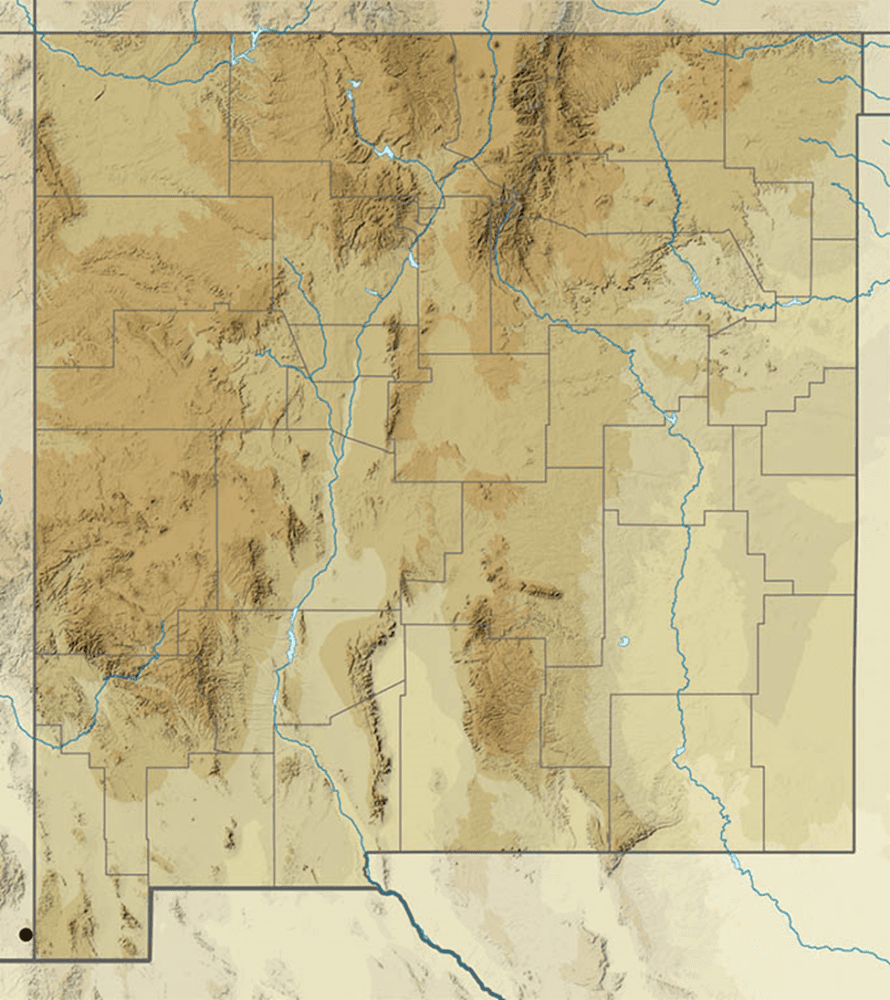by Steven J. Cary and Michael E. Toliver (added December 14, 2022)
Skippers (Hesperiidae). About a third of our butterfly fauna, more than 100 species, belongs to this family, which is subdivided into six subfamilies (in the US): Eudaminae, Tagiadinae, Pyrrhopyginae, Pyrginae, Heteropterinae, and Hesperiinae. Of those six subfamilies, five are known from New Mexico and the sixth (Tagiadinae, represented by Celaenorrhinus fritzgaertneri) has been taken on the Arizona side of Cottonwood Canyon, Peloncillo Mountains. Therefore, it is likely that eventually all six will be known from our state. The tribe Megathymini has been considered a seventh subfamily, but recent genetic work (Li, et al, 2019) shows it belongs in the Hesperiinae. Skippers earned their name because of their rapid, skipping flight, which is powered by a heavily muscled thorax. All skippers have antennal clubs that are distinctively bent, curved or hooked. Larvae silk leaves together for nests; larvae hibernate. Most subfamilies have distinct larval food preferences.
Flats (Hesperiidae: Tagiadinae). This group was described by Mabille (1878) and raised to subfamily status by Li, et al. (2019) based on genetic data. It is primarily a southern hemisphere group, with most species living in the Neotropics. However, two species make their way as strays to the United States, including one that is likely to be found in New Mexico. Flats (at least in the US) are distinguished by their behavior; they are crepuscular and prefer to spend the daylight hours sheltered in dark places such as caves and culverts or underneath leaves. Due to their secretive habits, they may be more common north of the Mexican border than currently thought. Members of this group rest with their wings spread flat (thus the common name). Larvae feed on plants in the family Acanthaceae, including members of the genus Ruellia (wild petunia), at least two species of which live in NM. One species (Celaenorrhinus fritzgaertneri [Bailey 1880], Fritzgaertner’s Flat) has been found close to NM.
Celaenorrhinus fritzgaertneri (Bailey, 1880) Fritzgaertner’s Flat (added December 14, 2022)
Description. Fritzgaertner’s Flat presents a more “butterfly-like” appearance with its more rounded wings. The ground color is lighter brown, with prominent rows of pearly spots on the dorsal FW. There is a smaller row of 3 subapical spots with two satellite spots, and a large row of median spots which is distinctive for skippers found in NM. The dorsal HW presents a mottled appearance, postmedian and median rows of lighter brown spots. Wing fringes are checkered. Ventrally, the dorsal pattern is repeated on a lighter ground color. Range and Habitat. This species is a rare stray or resident which has been found in AZ only three times (Bailowitz & Brock 2022). However, one of those 3 times was on the AZ side of Cottonwood Canyon, Peloncillo Mts. Given its secretive nature, we expect that individuals will eventually be found in the Bootheel region of NM. Life History. Larvae of this species feed on plants in the family Acanthaceae. The Butterflies of America web site (https://www.butterfliesofamerica.com/t/Celaenorrhinus_fritzgaertneri_a.htm) illustrates larvae feeding on Ruellia inundata in Costa Rica. Flight. The three AZ records are from July and August. Comments. A rare stray or hidden resident in the US, Look for it in the Peloncillo or Animas Mts. in Hidalgo County, NM. Persons looking for this species would be well advised to investigate culverts or rocky overhangs during the day and to extend their search periods to dawn and dusk.



